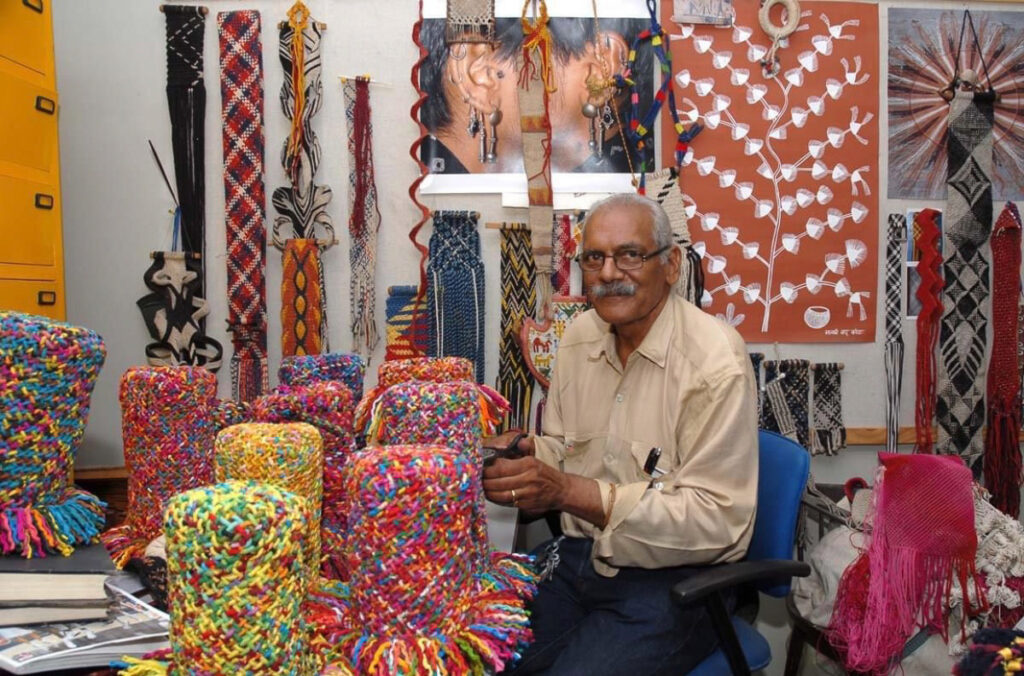
Helen Ting and Khushbu Mathur ask Erroll Pires from Ahmedabad how a timeless textile technique became his life’s work.
In the buzzing city of Ahmedabad, India, lives the man who has sometimes been referred to as the last living master of ply-split braiding. After starting out as a textile designer and then educator at the National Institute of Design, Ahmedabad, Erroll Pires discovered ply-split braiding over 30 years ago. His quest to learn this lesser-known craft took him as far as the desert in Rajasthan. He has not looked back since. Nor has he stopped, usually braiding daily. His work ranges from traditional camel belts to innovative and playful three-dimensional objects. And, in a true twist to this traditional craft, he invented seamless dresses from ply-split work which are now collected internationally.
Erroll has been teaching workshops in India and internationally for many years on this braiding technique which involves untwisting and retwisting plied cords and passing them into one another. He has played a unique role in helping to keep this ancient technique alive and to develop it in new directions.
Helen Ting and Khushbu Mathur catch up with Erroll.
COVID-19
✿ First of all, I hear that while you’re at home due to COVID-19 you’re working on some new creations. Could you tell us what you’re making?
When the first COVID-19 lockdown was imposed on 25 March 2020 in Ahmedabad, India, I was filled with anxiety and really could not fathom what to do. My three workshops that were scheduled around the same time were quickly cancelled by the institutions that had invited me.
Watching TV news coverage and reading newspapers increased my anxiety. I soon figured out there had to be a way out to deal with this uncertainty and I was not alone. The whole world was under the grip of this virus.
As I had materials (which were meant for the three workshops) I decided to put them to use and soon a daily routine of ply-split braiding set in. Slowly but surely two works emerged. These works would be fitted onto bamboo frames and would be stools for seating.
The next assignment I set for myself was to prepare for a workshop proposal for the 5th International Braiding Conference to be held in Denmark in the year 2022. The two-day workshop proposal will be sent to the Braid Society as soon as the conference dates and location is announced. The proposal became Constructing a HELICOID using the Ply-Split Braiding Technique.
The preparation and sample making for the workshop continues.
Meanwhile, I have started an ambitious project to create 1000 colourful braids. The technique used is eight strand square braids built on a key ring. A small bell may be added to the ring. This is still in the planning. 500 plus braids have been made and I am working towards 1000. On average, 12 to 15 pieces get made by me each day. During these uncertain times, I need colour and lots of it.
✿ You’re also continuing to teach at design schools in Ahmedabad. How is the COVID-19 situation affecting design education and craft communities?
Since my retirement from the National Institute of Design (NID) at the end of December 2011, I have been teaching on invitation at most design schools throughout India and a few places abroad.
COVID-19 has affected all design schools. They were all closed quickly. Students were sent home and the pending classes of the semester were conducted via online classes.
How this has affected craft communities is not known to me yet. From what I hear from individuals who work directly with craftspersons and craft communities, the situation is grave. All work has nearly come to a standstill.
Why Ply-Split Braiding
✿ What makes ply-split braiding special to you and why do you do it?
In around 1985 I wanted to study a craft which was less known. A faculty colleague and friend suggested I look at camel girths closely. My simple curiosity of trying to figure out how a motif was created using the ply-split braiding technique sent me in search of a craftsperson and my first visit changed my life forever. On my second visit to the desert town of Jaisalmer in western Rajasthan, I met my teacher and guru Ishwar Singh Bhati.
Why do I continue to do it? It is my form of meditation. A self-devised therapy which I practice every single day. A few hours daily and my own record has been 14 hours non stop!
✿ How did you learn ply-split braiding? Where and who from? Could you tell us a bit about your teacher?
I learnt ply-split braiding from my teacher the late Shri ISHWAR Singh Bhati, who lived in Jaisalmer, Rajasthan. He worked as a peon in the Collectors office. A simple man doing a simple job. For me, he was a Grand Master of a little known technique of ply-split braiding. A technique which was fast disappearing…
Keeping Ply-Split Tradition Alive / Role of Masters
✿ Why do you think it is important to keep this craft tradition going?
Any traditional textile technique is probably as old as mankind and reached a point of perfection over several generations of craft evolution: the right material with the appropriate technique to make a useful product. Any tradition needs to be sustained and practised. Generations to come should know about the past. Creating by hand with simple tools should never be forgotten.
✿ I’ve heard you referred to you as the last living master of ply-split braiding. That suggests that there aren’t Master artisans in this braiding technique to take over. Is that the case?
Well, being christened as the last living master of ply-split braiding is the doing of the media and the press. They print a story of what they see in the exhibition galleries in the big cities but very few of them would have researched the technique at its source.
When I first began my search in 1985, I thought that in five years, camel belts and the craftspersons and makers would be gone. I am glad that it hasn’t happened. Even now if one visits villages in remote areas, an elderly craftsperson can be found practising making a belt. While on the Indian side of Gujarat and RAJASTHAN, the belt and makers are on the decline, on the other side of the border, which is Pakistan, the camel belt makers are flourishing I am told. I haven’t visited craftspersons on the other side. Maybe one day soon I should visit them.
✿ What kind of person do you call yourself – artisan, craftsperson, artist, master? Why?
This has been a frequently asked question over the last 35 plus years.
Having been trained as a textile designer I have figured out a simple answer which is I am a “MAKER” who makes things that I enjoy making.
✿ The traditional ply-split braided camel girths of Kutch made from local wool and using traditional patterns is a tradition that is dying out. Is there a place for traditional camel girth ply-split braiding still?
Traditional ply-split braided camel girths of Kutch are made of Goat Hair (not camel hair) and sometimes the goat hair is combined with cotton cord. A few rarities can be found made with only cotton cords.
- Traditional motif camel girths (in the local language it is called Tang) from Erroll Pires Nelson’s collection. The material used is dyed cotton cord. The technique used is TLOI (two layered oblique interlacing). The belt has motifs of animals, birds, human figures and geometry. The belt is reversible and the motifs change colour when turned. A rarity in cotton cords and could be about 50/60 years in age and from the hands of a Master.
- Traditional motif camel girths (in the local language it is called Tang) from Erroll Pires Nelson’s collection. The material used is dyed cotton cord. The technique used is TLOI (two layered oblique interlacing). The belt has motifs of animals, birds, human figures and geometry. The belt is reversible and the motifs change colour when turned. A rarity in cotton cords and could be about 50/60 years in age and from the hands of a Master.
- Traditional motif camel girths (in the local language it is called Tang) from Erroll Pires Nelson’s collection. The material used is dyed cotton cord. The technique used is TLOI (two layered oblique interlacing). The belt has motifs of animals, birds, human figures and geometry. The belt is reversible and the motifs change colour when turned. A rarity in cotton cords and could be about 50/60 years in age and from the hands of a Master.
The tradition of girth making is on the decline and on the verge of dying out. I would think the technique would continue and would be used in a contemporary application. Already I have reintroduced the technique and, along with young craftspersons, we have made small utility products. Techniques don’t die, they just transform into contemporary products.
The future
✿ I’m interested in the concept of adaptation and resilience regarding teaching traditional crafts. Do you think ply-split braiding is a resilient craft that will adapt and remain relevant? Are you optimistic about the future of this technique? *
The technique of ply-split braiding is an extremely resilient craft and, over the years, fibre artists/textile artists from across the world have learnt and adapted the technique for their individual expressions. From bags, to belts, to wall hangings, my one-of-a-kind wearable full-length dresses, each of the works use techniques originated from ply-split braiding. I am absolutely super optimistic about the future of this technique. Since my retirement from the National Institute of Design in 2011, I have been invited to conduct workshops from design and art schools. The participants are eager to learn this less known technique. I think the technique of macrame has been done to death over the decades across the world. People are keen to explore a new technique. So I would say ply-split braiding is the new technique on the block!
My breakthrough has been coming up with one-of-a-kind seamless wearable dresses. I think it all happened with the guidance of my two teachers, Ishwar Singh Bhati and Peter Collingwood. For their guidance and encouragement that I received from both my teachers, I am eternally grateful.
With their constant support, I came up with the technique of twined linking, which is the structure that I use in constructing the dresses.
I have constructed several dresses, each time learning and moving ahead from the last one completed.
The first seamless dresses were acquired by the Whitworth Museum in Manchester for their permanent collection along with a few objects which I call Useless or Useless happy containers (word play).
The second seamless dresses, along with 128 works, were acquired by the Living and Learning Design Centre (LLDC) Museum in Kutch, India.
What I would really want to do is place one seamless dress in well-known museums which house contemporary textiles, along with a few examples of my happy containers. Would be happy to hear from museum curators. Maybe through Garland magazine contact could be established.
- Erroll’s breakthrough ply-split braid seamless dresses
✿ What changes are you seeing in teaching and learning ply-split braiding? What challenges does teaching ply-split braiding face over the next while and what strategies are you adopting for these? Is it possible to teach this braiding online?*
So far, the teaching and workshop situation with the number of participants in a class varying from 15 to 30 in number has been the norm. An experienced teacher would guide every individual student.
Today the new normal is online. My first invitation to conduct an online session was scheduled for September. I have to learn and adapt to online teaching! Online would have its limitations but we have to give it a try.
✿ If you were to combine ply-split braiding with another craft process, then what would it be?
I have been reluctant to combine any other techniques with ply-split braiding. If I had to combine a technique, it would be the macrame knotting technique. Especially for students who already practice macrame, the transition to combine ply-split braiding would be easier to learn.
✿ Do you have a successor?
For years, decades, in fact, I have been asked, who would be my successor. In February 2020, I publicly announced that Shubhra Singh would succeed me.
Shubhra studied textiles at NID soon after completing a Bachelor of Architecture. The common notions of construction both in architecture and textiles and her love for crafts had brought her to NID.
My association with her began when she was with a group of students who approached me regarding the documentation of the craft of camel girth making. They were studying the craft and had found out about me.
And then a few years later, when she started her professional journey, the joy of braids unfolded alongside other crafts. She had been learning and practising ply-split braiding under my guidance along with her expertise in hand spinning.
I am confident that in years to come she will confidently and successfully take over the responsibility of teaching it to those who are interested and keep the less known technique of ply-split braiding alive.
✿ Anything else that you want to share with us?
I would suggest you get to know the Braid Society in UK and their activities and the International Braiding Conferences that Braid Society organizes. The 4th International Braiding Conference was held at Iga city, Japan in October 2019. I conducted a workshop and introduced the making of a camel motif. The next 5th edition is scheduled to be held in August 2022 in Denmark. The venue/city has not been announced. These conferences bring together experts from all over the world. I am planning to send my proposal for the workshop as soon as the conference is announced.
Another suggestion to all your readers of Garland Magazine: do take an interest in ply-split braiding. In case you would like to know more, do write to me by email and if you do plan a visit to my city Ahmedabad, Gujarat, India you could get to know more about my work. I do meet textile enthusiasts with prior planning and appointments.

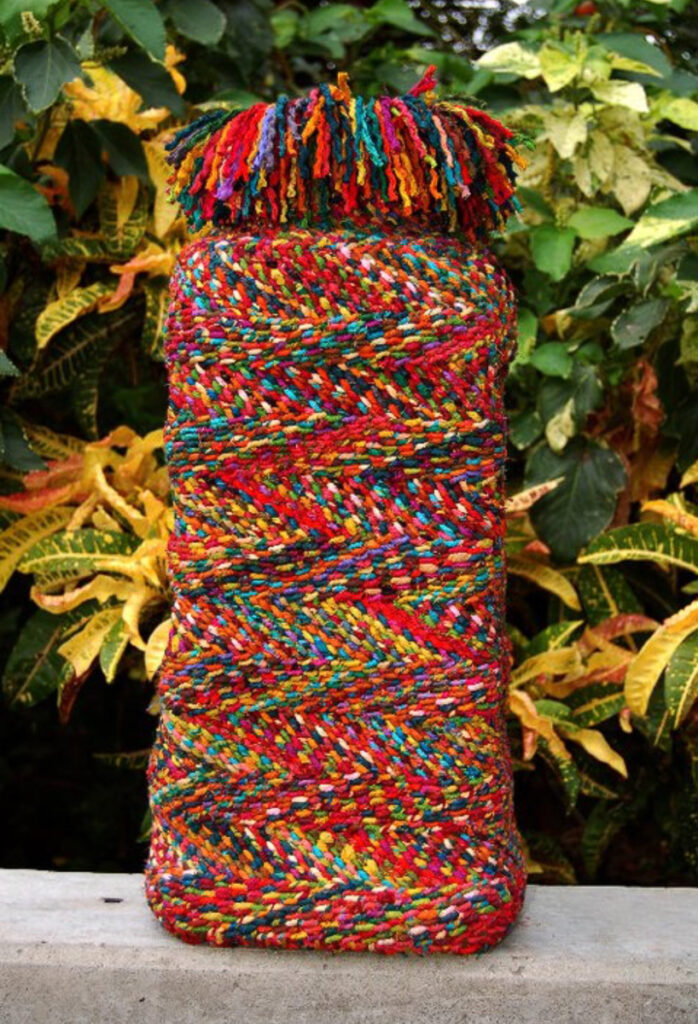
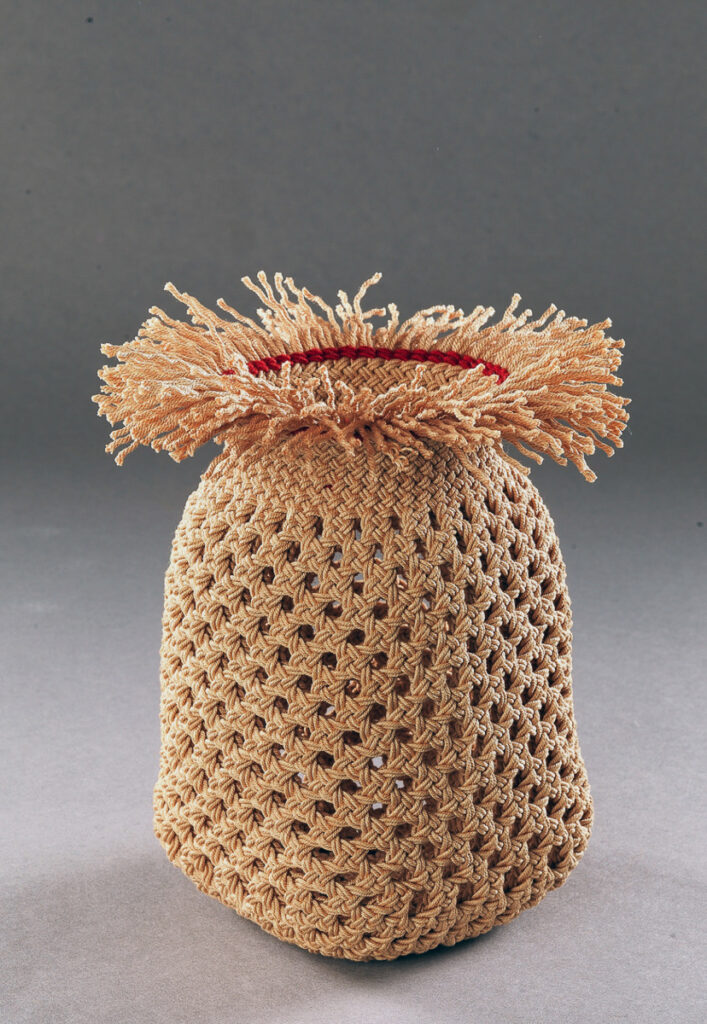
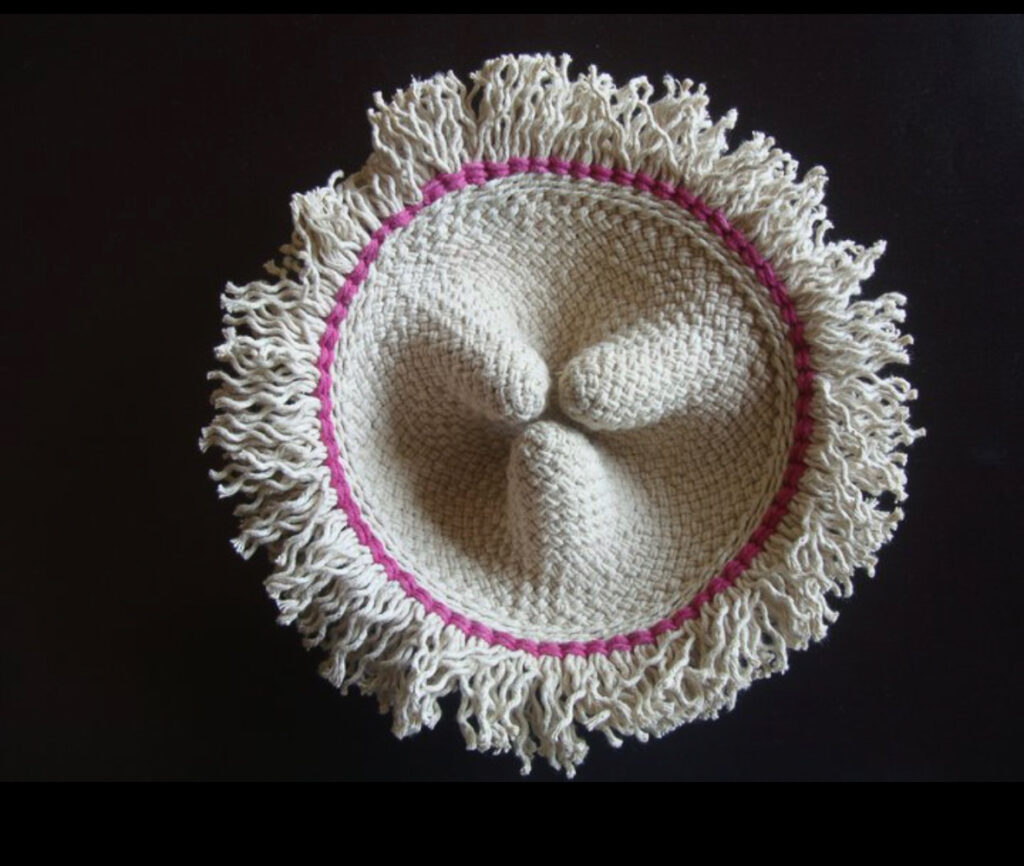

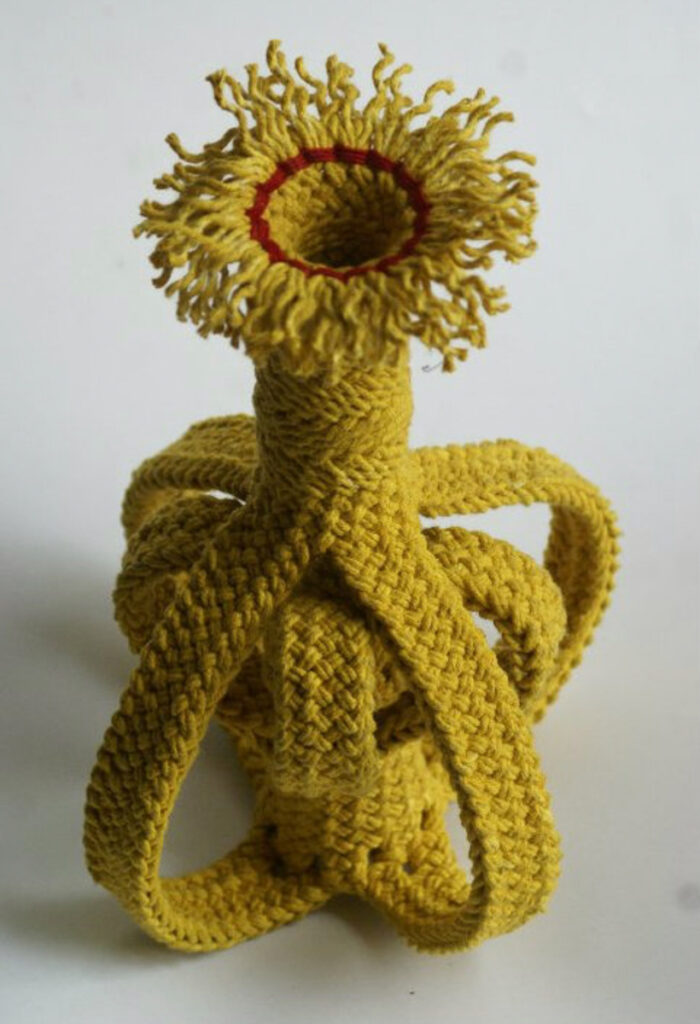
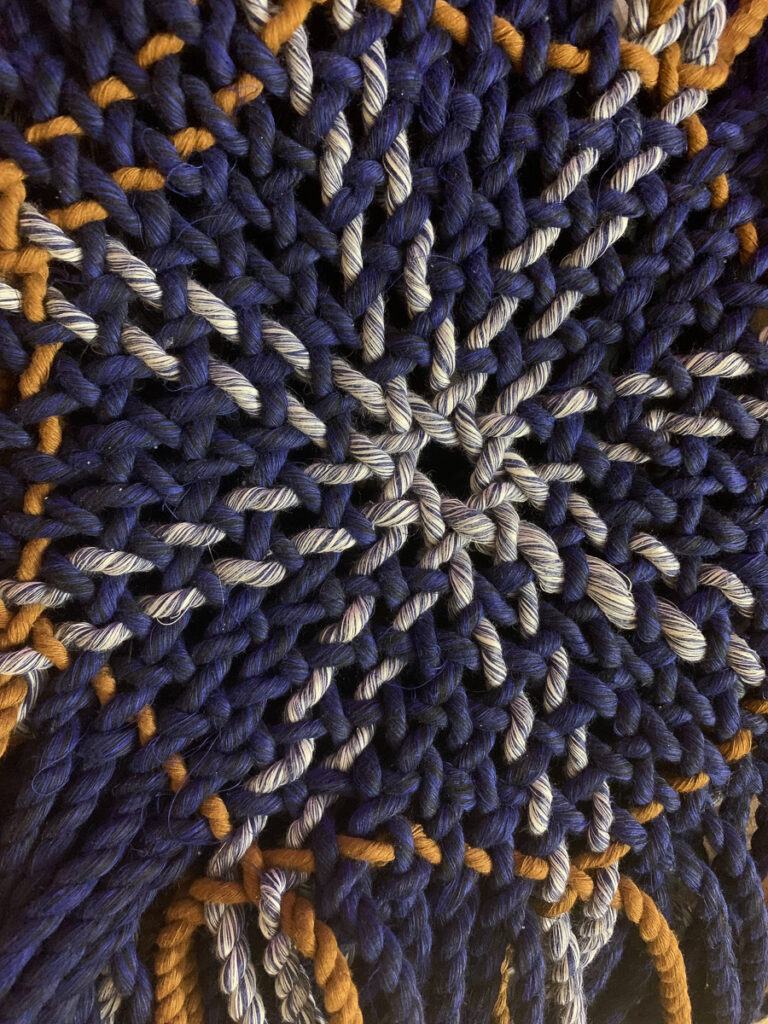
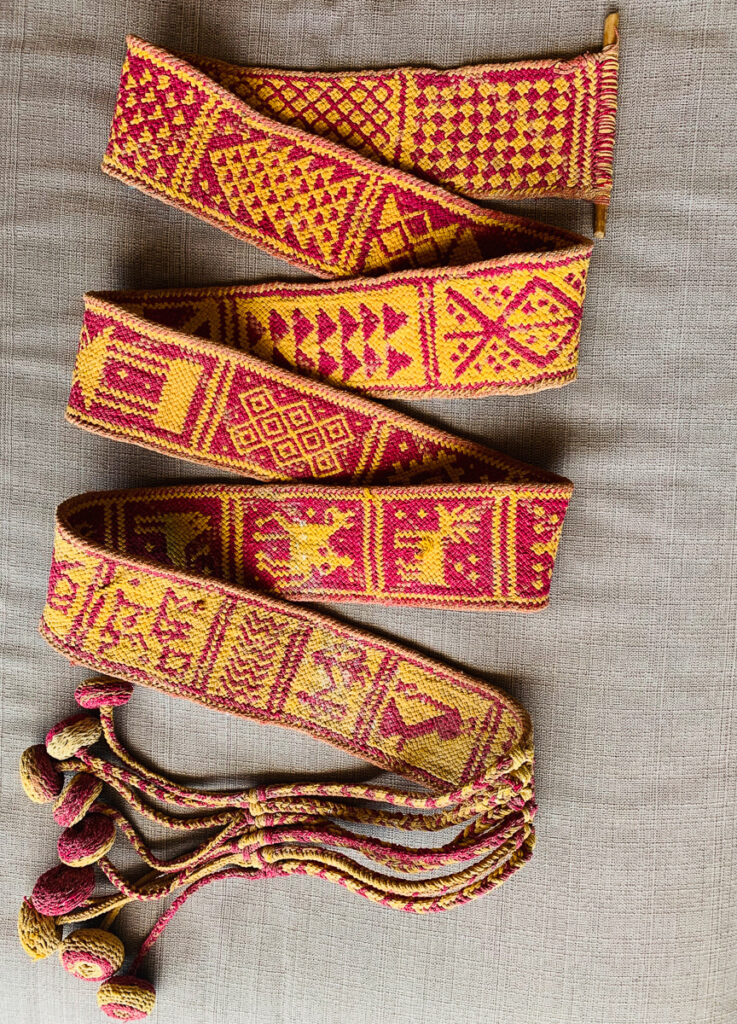
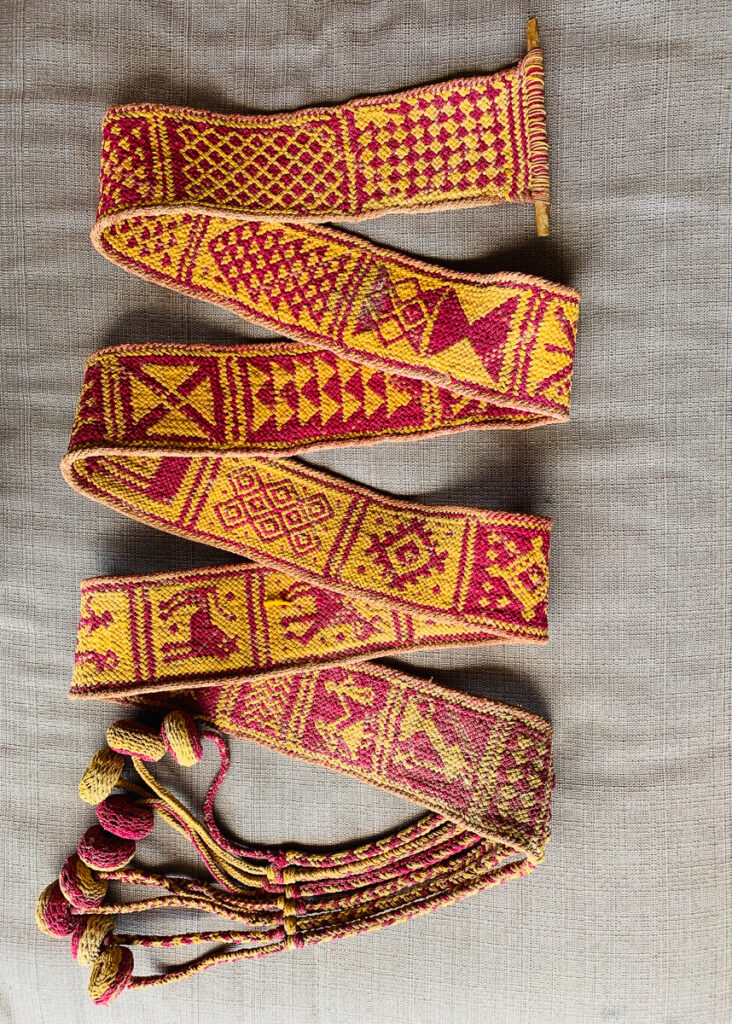
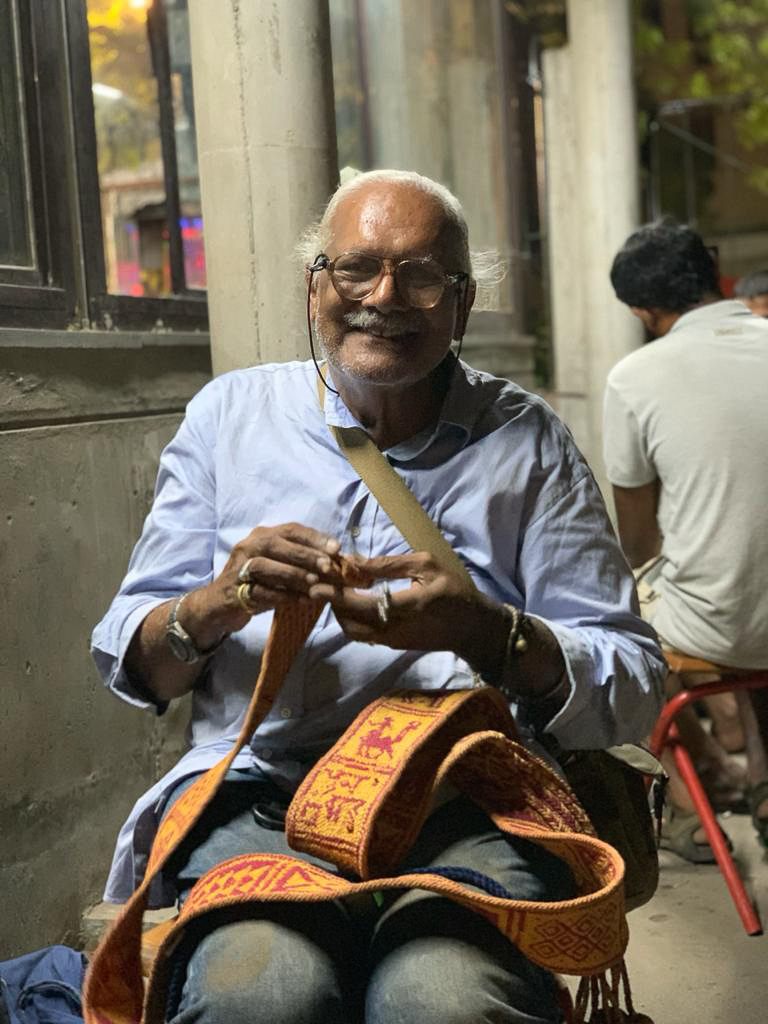
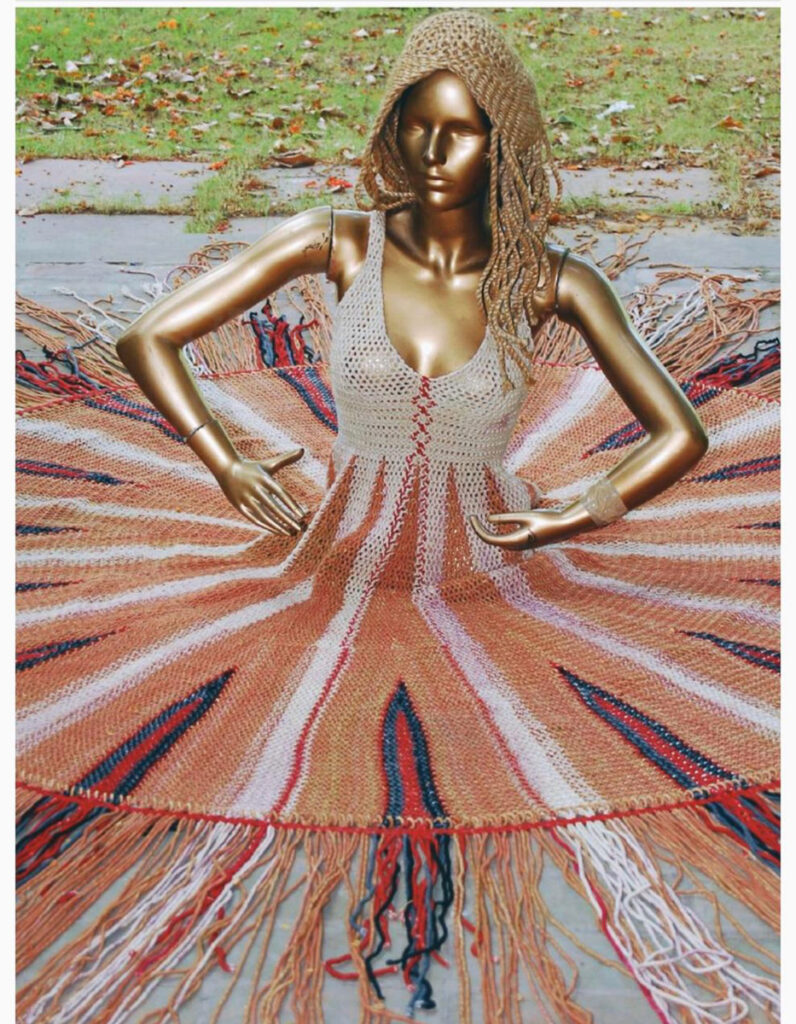

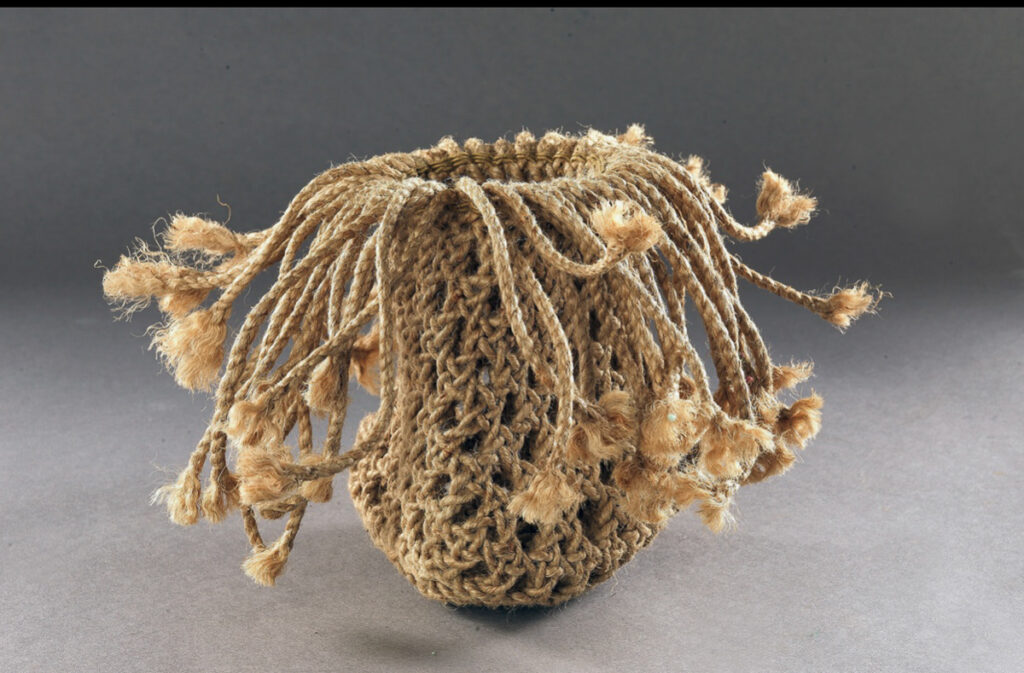
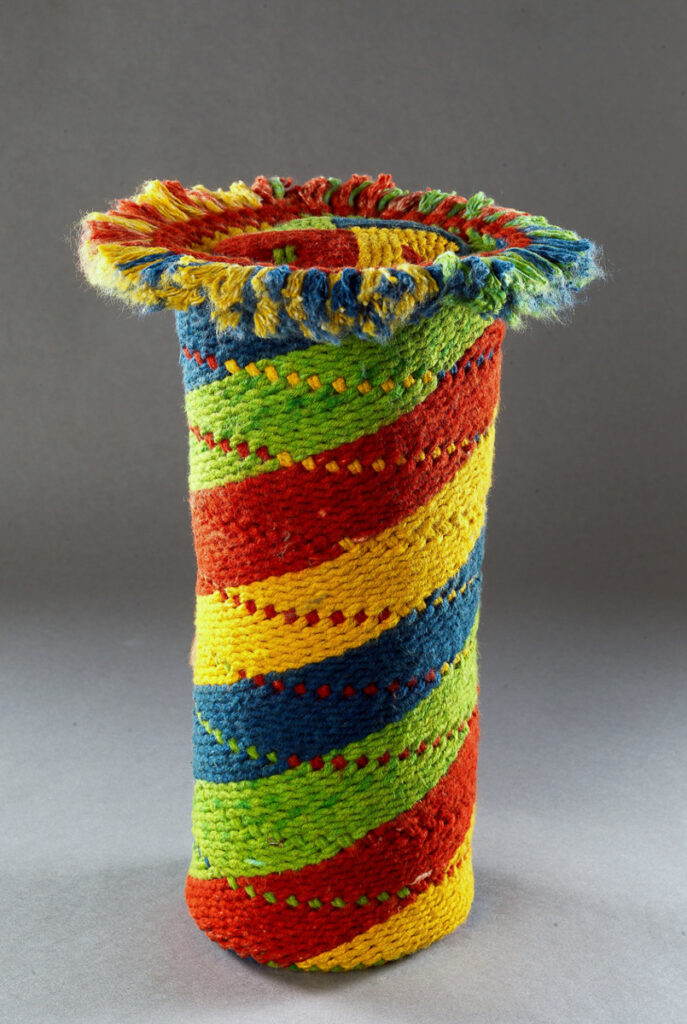
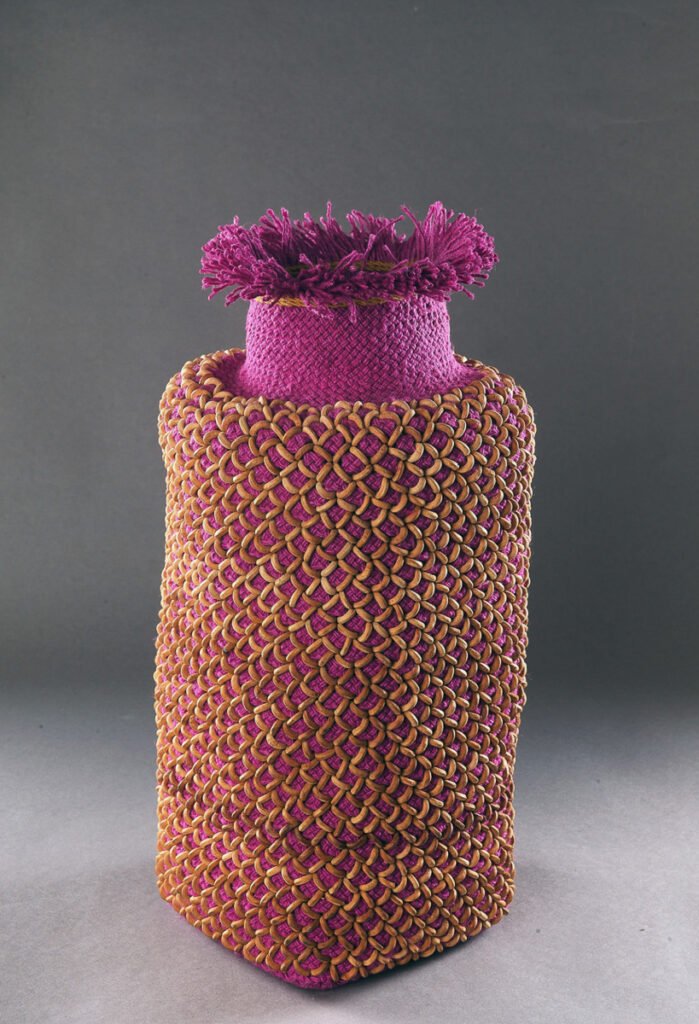
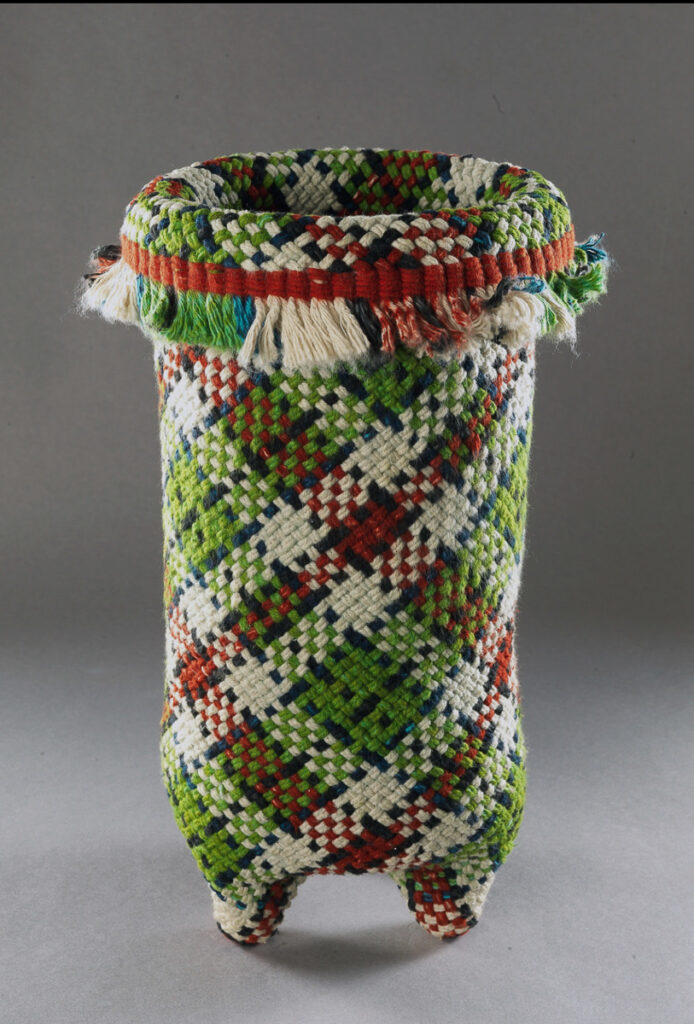

Comments
Lovely to get an opportunity to share such an extensive journey in today’s time when everything is shifting towards mechanisation industrialisation with hardly anyone really interested in manual or craft oriented field.I assume a few in the band wagon of handcrafted scenerio.
I feel the journey is extensive with roots which are strong which has been nurtured & given some inputs which are genuine & eye catching.
I am not an authority hence would like to share that it is one of the rare field technique & nicely woven to an arena which is undoubtedly classic keeping in view the culture tradition & involvement.
Nice work & should be further carried forward for the betterment of future.
It is a well written article on the passion with which Erroll Pires has been practising ply- split braiding! He has been my Professor at NID Ahmedabad and have been watching him all absorbed and patiently braiding splendid masterpieces sitting quietly in his room in the midst of beautiful yarns and colours! His passion is extremely inspiring for all who have seen him at it and seen the new hoizons he has taken ply-split braiding to!
My best wishes to him!
Mr. Erroll Pires Nelson is a wonderful personality. He is my teacher, my inspiration, my guide. His dedication towards his work inspire me. I still remember his words that braiding is like meditation for him. This article is well written about him. I wish him a good health & a wonderful year ahead. Happy New Year
Wonderful and inspiring. Such artisans bring us all closer together in a time when isolation is prominent in our world. Kind wishes and blessings. I have been writing short poems together with an image and this has helped me share creativity and keep connected during these times.